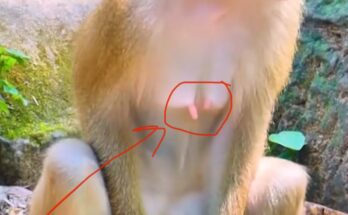
The question of whether animals are aware of death has intrigued scientists and philosophers alike. Among the most compelling subjects of this inquiry are non-human primates, particularly monkeys, due to their close evolutionary relationship with humans. Are monkeys truly aware of death, and do they exhibit grief in a way that suggests emotional understanding? Emerging studies suggest that monkeys do show signs of mourning, indicating at least a rudimentary awareness of death.
Researchers have observed various monkey species engaging in behaviors that resemble mourning after the loss of a group member, especially infants. For example, female monkeys have been seen carrying the lifeless bodies of their dead infants for days or even weeks. This behavior has been documented in species such as baboons, macaques, and capuchins. The prolonged contact with a dead infant may suggest confusion, denial, or emotional distress, which raises important questions about what monkeys understand about death.
Some scientists argue that such behaviors could be instinctual, driven by hormonal changes or maternal attachment, rather than evidence of grief or awareness of death. However, the complexity of the behaviors—such as grooming the dead, showing visible signs of stress, or withdrawing socially—implies there may be more going on than mere biological impulse. In some cases, troop members gather around the dead body, showing increased vocalizations or agitation. These responses may not equate to human-like mourning, but they suggest emotional processing.
In a notable study, researchers tracked baboon behavior after the death of an infant. The grieving mother not only carried the corpse but was observed becoming socially withdrawn and less active. Other group members responded to her with increased grooming—possibly a form of comfort or social bonding during a difficult time. These reactions parallel some human grieving behaviors, albeit in a simpler form.
There is still considerable debate in the scientific community about whether these reactions represent true awareness of death or are more about responding to absence and change in social structure. Awareness of death implies some level of cognitive understanding that a being once alive is now permanently gone. That level of abstract thinking is hard to measure in non-human animals. Still, the observable behaviors in monkeys indicate at least a recognition that something significant has occurred.
The study of grief in monkeys offers valuable insights into the evolution of emotional and cognitive capacities. Understanding how other primates respond to death not only deepens our appreciation of their inner lives but also sheds light on the evolutionary roots of human mourning and empathy.
In conclusion, while we cannot definitively state that monkeys are fully aware of death in the human sense, their behaviors following the loss of a group member strongly suggest emotional responses and possible grief. As research continues, we may uncover more about how these animals process loss—and what that reveals about the emotional depth of our primate cousins.


